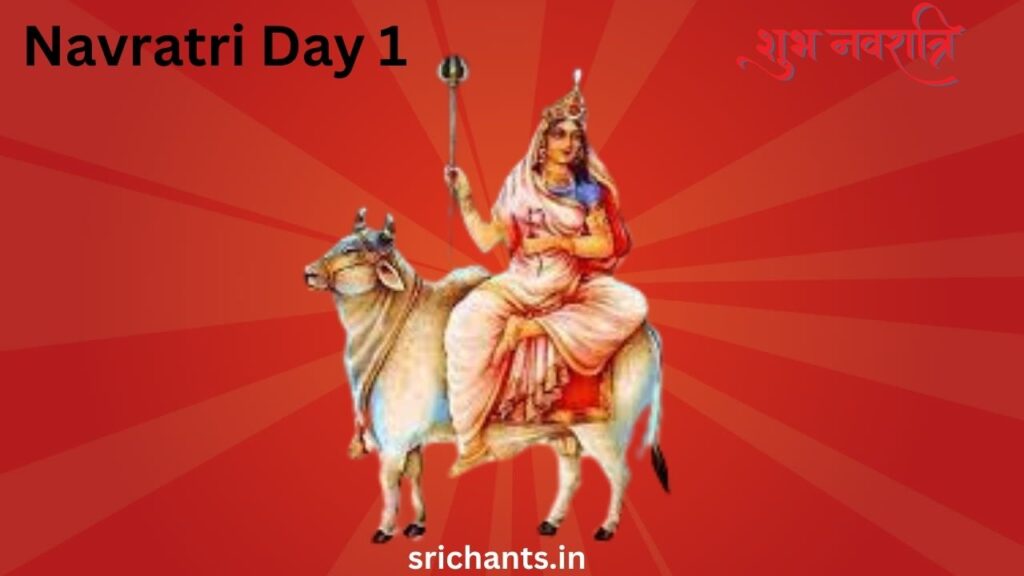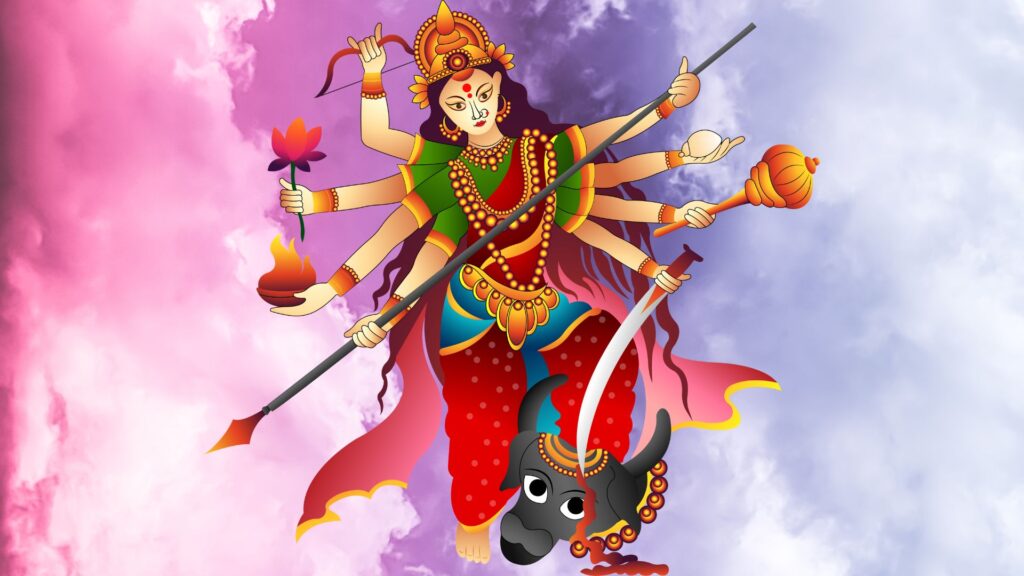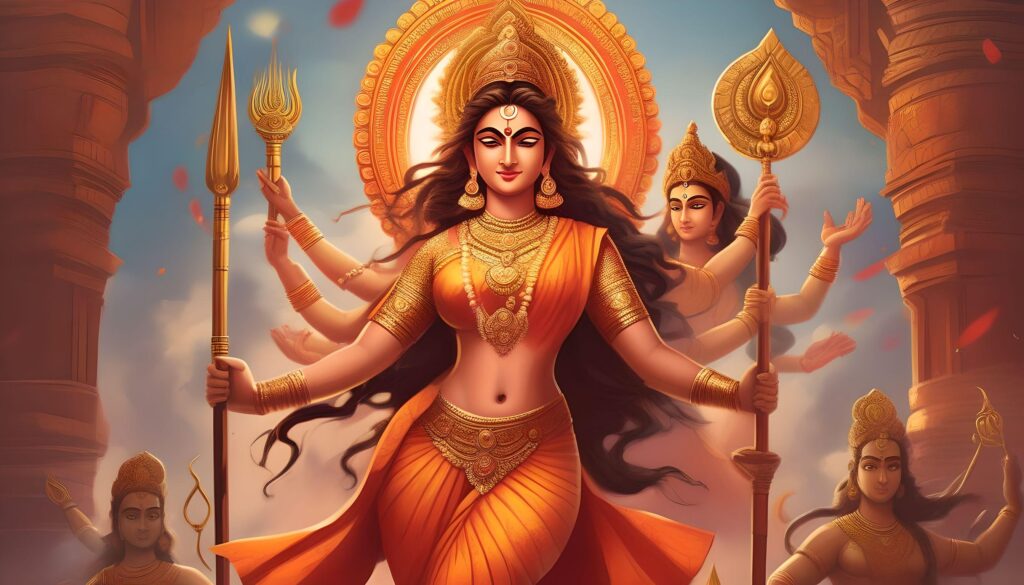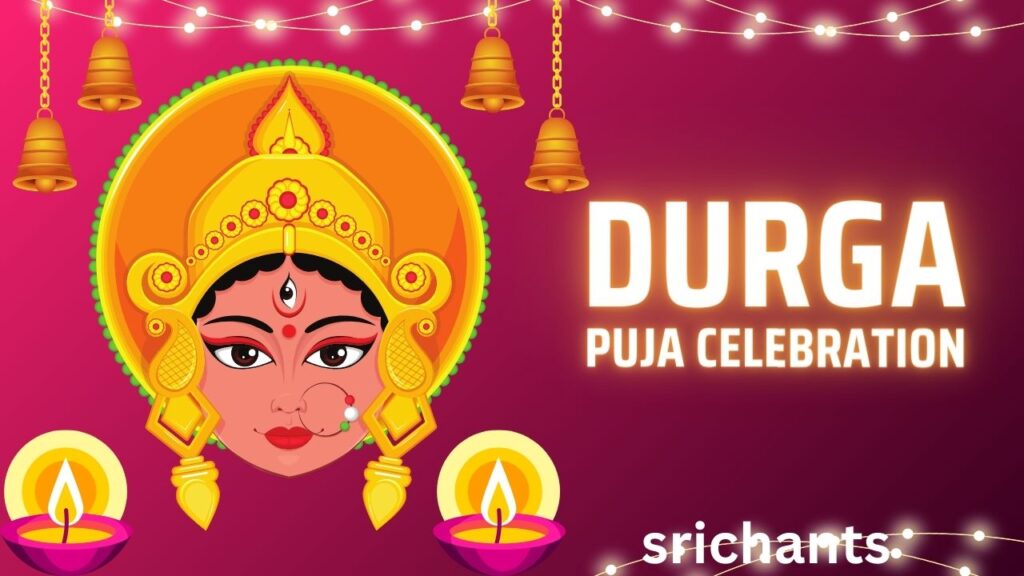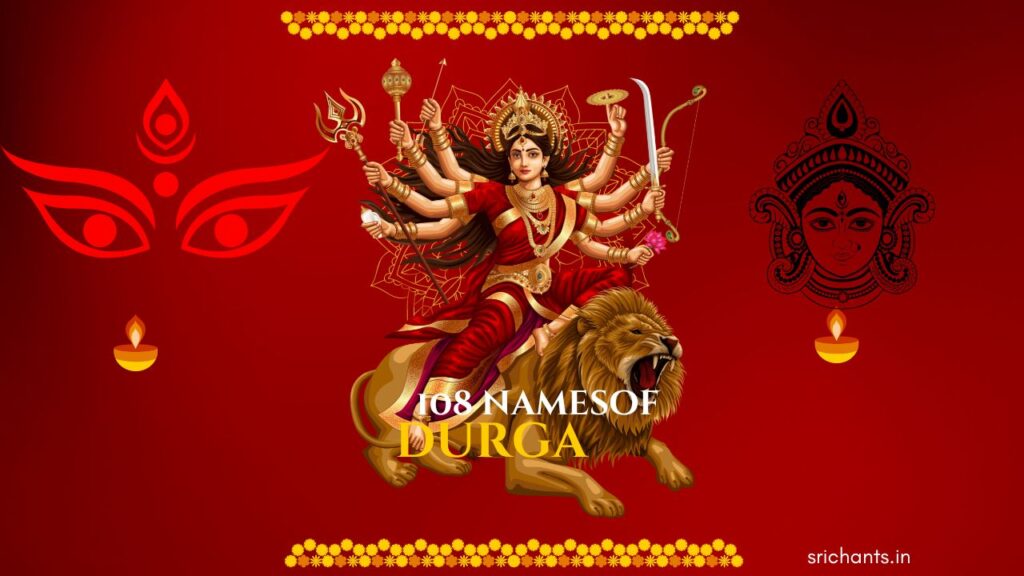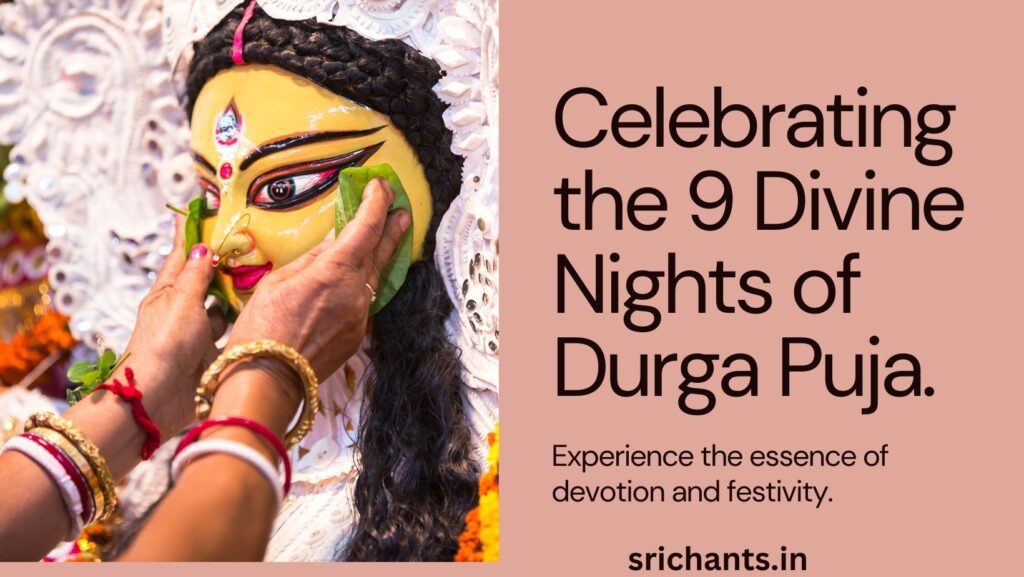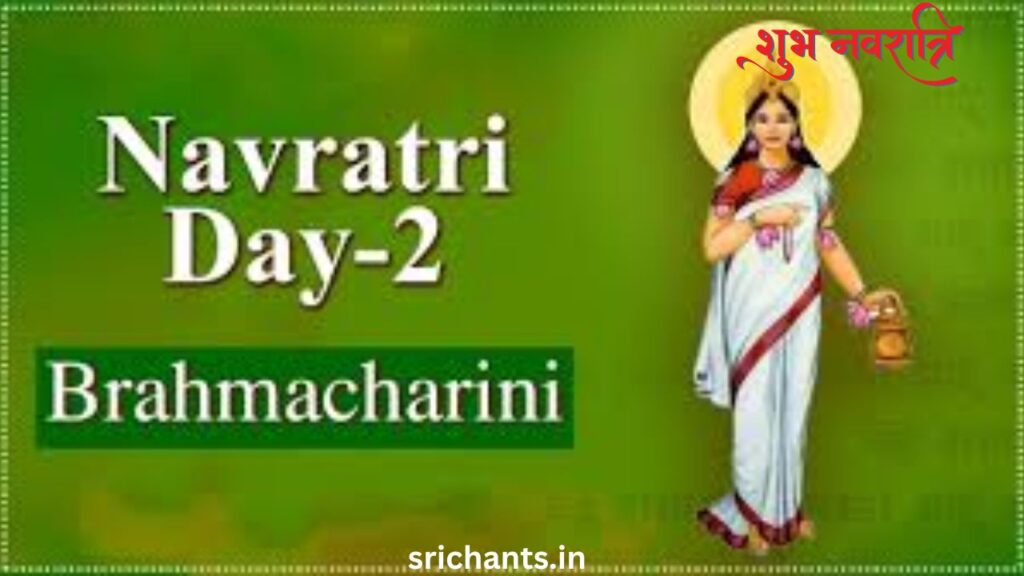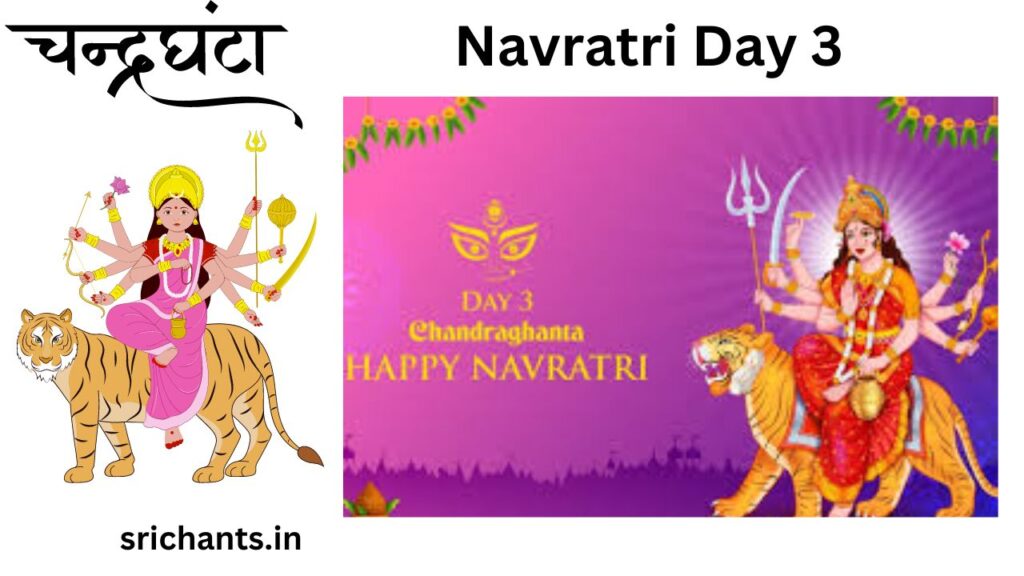Navratri day 1 : Shailputri : Ushering in the First Day of Navratri
Introduction
The first day of the auspicious festival of Navratri is avidly anticipated by Hindus worldwide, as it is dedicated to the veneration of the divine Goddess Shailputri. This esteemed avatar of Maa Durga is considered to be the embodiment of the harmonious equilibrium of nature, spiritual enlightenment, and prosperity.
Shailputri, whose name translates to “the daughter of the mountains,” occupies an important position in the affections of devotees who seek her blessings for a prosperous and fulfilling year ahead. We should investigate the profound wisdom and divine grace that Maa Shailputri bestows upon her devotees as we investigate the significance, symbolism, and rituals associated with the first day of Navratri.
The Goddess of the Mountain: Unveiling the Essence of Maa Shailputri
Maa Shailputri is the initial of the nine manifestations of Goddess Durga that are revered during the nine-day festival of Navratri. She is considered to be the embodiment of the divine powers of Shiva, Brahma, and Vishnu, rendering her a deity that is both potent and multifaceted.
In Hindu mythology, Maa Shailputri is the daughter of the powerful Himalayan mountains, Parvatraj or Himavat, and his consort Maina. Parvati, the daughter of the mountains, was born after the tragic self-immolation of Goddess Sati, the divine consort of Lord Shiva. She subsequently became the wife of Lord Shiva, thereby reuniting the divine couple.
Maa Shailputri’s iconography serves as a testament to her divine essence. She is depicted as a Goddess with two hands, holding a trident (Trishul) in her right hand and a lotus bloom in her left. She is frequently depicted as seated on a majestic bull, which serves as a representation of her dominion of the material world and her capacity to overcome all obstacles.
The white color that is associated with Maa Shailputri is symbolic of purity, innocence, serenity, and tranquility, which are indispensable for spiritual development and enlightenment. As the guardian of the Root Chakra, Maa Shailputri is believed to bestow her devotees with the strength and determination to surmount any challenges they may face in their lives.
The Significance of Maa Shailputri in Navratri
Maa Shailputri is revered as the goddess of prosperity, fortune, and spiritual awakening, and the first day of Navratri is dedicated to her homage. Her blessings are sought by devotees for the personal and spiritual development, as well as for a prosperous and fulfilling year ahead.
Maa Shailputri’s connection to the Moon is especially noteworthy, as the Moon is regarded as the sovereign of the mind and emotions. Devotees strive to harness the positive energies of the Moon by worshiping Maa Shailputri, which can assist them in overcoming the negative effects of Chandra Dosha (Moon-related astrological afflictions) and achieving a state of inner harmony and balance.
In addition, the Goddess Shailputri is held in high regard as the embodiment of Mother Nature, and it is believed that her worship fosters a more profound connection with the natural world. Devotees frequently pray to her for a plentiful harvest, protection from natural disasters, and a harmonious coexistence with the environment.
The Rituals and Traditions of Maa Shailputri Puja
Several significant rituals and traditions that commemorate the divine presence of Maa Shailputri are observed on the first day of Navratri, which is referred to as Pratipada.
Ghatasthapana: The Auspicious Invocation
The Ghatasthapana, or the installation of the sacred vessel (Kalash), is one of the most significant rituals of Navratri. It is believed that this ritual is performed on the first day of the festival in order to invoke the divine energy of Maa Durga and her nine manifestations, which include Maa Shailputri.
The Ghatasthapana ceremony entails the inclusion of coins, grains, and other auspicious items, as well as the location of a copper or brass pot of water. The pot is then adorned with mango leaves and a coconut, and a lamp is ignited in its vicinity. The lamp remains lit for the duration of the nine-day festival.
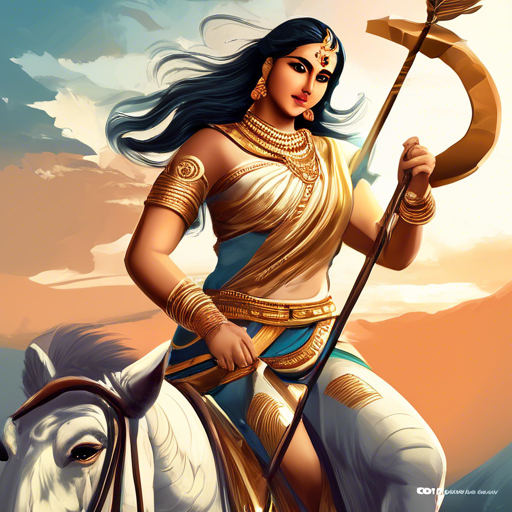
Maa Shailputri Puja: Honoring the Goddess
Devotees conduct the Maa Shailputri Puja on the first day of Navratri, which entails the worship of the Goddess with profound reverence and devotion. The puja typically entails the recitation of mantras and hymns dedicated to the Goddess, as well as the offering of flowers, incense, lamps, and other auspicious items.
Devotees seek the graces of Maa Shailputri during the puja to ensure the prosperity and abundance of their households, as well as their personal and familial well-being. They also pray to the Goddess to provide them with the fortitude, courage, and determination necessary to confront the obstacles that await them.
The Significance of Maa Shailputri Aarti
The Maa Shailputri Aarti, a devotional hymn that is chanted in honor of the Goddess, is of great importance on the first day of Navratri. Devotees chant the aarti with the utmost reverence and devotion, as it is believed to invoke the divine grace of Maa Shailputri.
The lyrics of the Maa Shailputri Aarti underscore the Goddess’s divine qualities, including her ability to grant boons and fulfill the wishes of her devotees, her role as the provider of prosperity and wealth, and her association with Lord Shiva. Devotees endeavor to align themselves with the Goddess’s divine energies and receive her favors by singing the aarti.
The Auspicious Timings and Muhurat for Maa Shailputri Puja
The Hindu calendar directs the observance of Maa Shailputri puja on the first day of Navratri to specific auspicious periods and muhurat (auspicious moments).
Ghatasthapana Muhurat
The Ghatasthapana ritual, which signifies the commencement of Navratri, is conducted at a specific muhurat on the first day. The Ghatasthapana muhurat for Chaitra Navratri 2024 is between 6:02 AM and 10:16 AM on April 9th, as per the Drik Panchang. Invoking the divine presence of Maa Durga and her manifestations, including Maa Shailputri, is considered extraordinarily auspicious at this time.
Shailputri Puja Timing
The Maa Shailputri pooja is typically performed on the first day of Navratri during the Pratipada tithi (lunar day). The tithi of Pratipada commences on April 8th at 11:50 PM and concludes on April 9th at 8:30 PM in 2024. It is believed that this period is the most auspicious for honoring the Goddess, and devotees are encouraged to perform the Maa Shailputri puja during this time.
Chandra Darshan
The Chandra Darshan, or the moon’s sighting, is another significant ritual that is associated with the first day of Navratri. The Chandra Darshan timetable for Chaitra Navratri 2024 is scheduled to occur on April 9th between 6:44 PM and 7:29 PM, as per the Drik Panchang. This ritual is frequently performed by devotees in order to invoke the bounties of the Moon, which is reputed to be under the divine influence of Maa Shailputri.
The Significance of Maa Shailputri’s Mantra and Stotras
Reciting the sacred mantras and stotras (hymns) dedicated to Maa Shailputri is an essential component of the Navratri celebrations. The Goddess’s divine presence is believed to be invoked by these spiritual invocations, which also facilitate the attainment of spiritual enlightenment, prosperity, and well-being.
The Maa Shailputri Mantra
The “Om Devi Shailaputryai Namah” mantra is one of the most potent mantras that are associated with Maa Shailputri. This mantra is reputed to assist devotees in overcoming the adverse effects of Chandra Dosha and in attracting affluence, health, and happiness into their lives.
Maa Shailputri Stotras
Devotees recite a variety of stotras (hymns) dedicated to Maa Shailputri, including the “Vande Vanchhitalabhaya Chandrardhakritashekharam” stotra, in addition to the mantra. These spiritual invocations underscore the Goddess’s divine attributes, her capacity to provide prosperity, and her ability to grant her devotees spiritual fulfillment, serenity, and harmony.
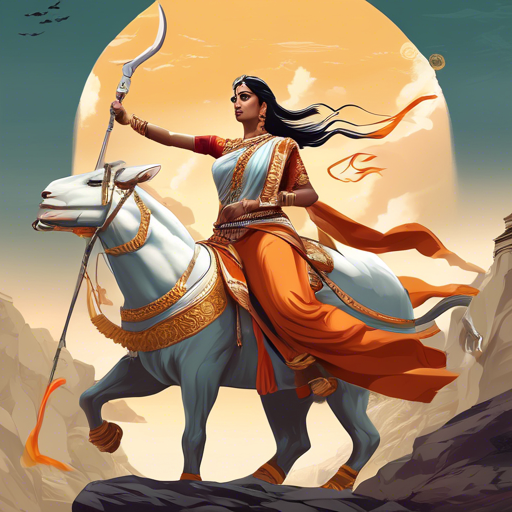
The Symbolic Significance of Maa Shailputri’s Iconography
Maa Shailputri’s iconography is replete with symbolism, with each element conveying a profound philosophical and spiritual significance.
The Bull (Vrisharudha)
Maa Shailputri is frequently depicted as leading a majestic bull, Vrisharudha. The bull is a representation of the capacity to surmount challenges, stability, and fortitude. The bull in the context of Maa Shailputri symbolizes her ability to lead her devotees toward spiritual enlightenment and her dominion of the material world.
The Trident (Trishul)
The trident, or Trishul, that Maa Shailputri caries in her right hand is a representation of the divine trinity of Brahma, Vishnu, and Shiva. It is a representation of the Goddess’s capacity to generate, preserve, and eliminate, as well as her status as the ultimate embodiment of the divine feminine energy.
The Lotus Flower
The lotus flower in Maa Shailputri’s left hand is a representation of the capacity to transcend the material world, spiritual revelation, and purity. It symbolizes the Goddess’s ability to direct her followers toward a state of interior tranquility, harmony, and enlightenment.
The Blessings and Boons of Maa Shailputri
Maa Shailputri is regarded as a goddess who bestows a diverse array of bounties and boons upon her devotees. It is believed that these divine gifts will improve the overall well-being and prosperity of her devotees in both the material and spiritual domains.
Elimination of Chandra Dosha
The removal of Chandra Dosha, or the detrimental effects of the Moon, is one of the primary blessings associated with Maa Shailputri. By worshiping the Goddess, devotees endeavor to resolve any astrological afflictions associated with the Moon, which can affect their personal relationships, finances, and health.
Spiritual Awakening and Enlightenment
It is believed that Maa Shailputri, in her capacity as the guardian of the Root Chakra, assists her devotees in forging a more profound connection with their spiritual selves. Devotees can unlock their inner potential, cultivate a sense of purpose, and embark on a transformative voyage towards self-realization and enlightenment by seeking her blessings.
Prosperity and Abundance
Maa Shailputri is also regarded as the source of prosperity, affluence, and abundance. Devotees frequently pray to the Goddess in hopes of receiving her divine mercy and blessings, as well as financial stability, a successful career, and the fulfillment of their material desires.
The Significance of Maa Shailputri in the Context of Navratri
The worship of Maa Shailputri on the first day of Navratri is of great importance, as it establishes the tone for the entire nine-day festival. Devotees embark on a transformative voyage toward spiritual and material fulfillment by honoring the Goddess and seeking her blessings.
The Beginning of the Navratri Journey
The nine-day celebration of Navratri commences on the first day, which is dedicated to Maa Shailputri. This day is regarded as a period of rejuvenation, renewal, and the invocation of the divine feminine energy. Devotees establish the groundwork for a prosperous and successful Navratri celebration by worshiping Maa Shailputri.
The Gradual Ascent towards Enlightenment
Devotees persist in worshiping the nine distinct manifestations of Maa Durga, each of which symbolizes a distinct aspect of the divine feminine, as the Navratri festival advances. This gradual ascent toward the final day, which acknowledges Maa Siddhidatri, is regarded as a spiritual journey of enlightenment and development, with Maa Shailputri’s blessings providing guidance to the devotees at each stage.
The Harmony of the Cosmos
The worship of Maa Shailputri on the first day of Navratri is also regarded as a commemoration of the harmonious equilibrium between the divine masculine and feminine energies. Devotees cultivate a more profound understanding of the interconnectedness of all things and the cosmic order by paying tribute to the Goddess, which recognizes the critical role of the divine feminine in the creation, sustenance, and transformation of the universe.
Conclusion
A profound and transformative celebration that holds immeasurable significance for Hindu devotees, the first day of Navratri is dedicated to the veneration of Maa Shailputri. Maa Shailputri’s divine blessings are sought by devotees to usher in a year of abundance, happiness, and spiritual development, as she is the embodiment of spiritual enlightenment, prosperity, and the harmonious balance of nature.
Devotees establish a more profound connection with the divine feminine and unlock the path to self-realization and inner serenity by reciting mantras and stotras, deep contemplating the Goddess’s iconography, and adhering to rituals. Devotees commence a transformative journey that culminates in the realization of their utmost potential, fulfillment, and true wisdom by honoring Maa Shailputri on the first day of Navratri.
#shailputri #navratriday1 #maashailputri #shailputrimata #navratri #shailputrimantra #maashailputrimantra #goddessshailputri
